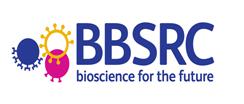Inheritance, DNA and variation
These resources introduce students to inheritance and DNA. The list provides a range of activities, lesson ideas, film clips, background information, practical tips and suggested teaching strategies which link to the following statements in the 2014 National Curriculum:
• heredity as the process by which genetic information is transmitted from one generation to the next
• a simple model of chromosomes, genes and DNA in heredity, including the part played by Watson, Crick, Wilkins and Franklin in the development of the DNA model
• the variation between individuals within a species being continuous or discontinuous, to include measurement and graphical representation of variation.
Visit the secondary science webpage to access all lists: https://www.stem.org.uk/secondary-science
Whilst this list provides a source of information and ideas for experimental work, it is important to note that recommendations can date very quickly. Do NOT follow suggestions which conflict with current advice from CLEAPSS, SSERC or recent safety guides. eLibrary users are responsible for ensuring that any activity, including practical work, which they carry out is consistent with current regulations related to Health and Safety and that they carry an appropriate risk assessment. Further information is provided in our Health and Safety guidance.
- ALL
- Teacher guidance
- Activity sheet
Teacher guidance
Discovering DNA - the Recipe of Life
This resource can be used across several lessons or as a one day workshop to explore the nature of DNA as a chemical which provides a set of instructions.
Students compare DNA to recipes for cakes, look at where DNA is found in cells and are introduced to the genetic code in a simple way. After extracting DNA, students construct cartoon faces from a DNA 'recipe'.
Activity sheet
Origami DNA
Having extracted DNA, students create a simple model of the structure of DNA using this origami activity, demonstrating its double helix structure.
Introducing DNA *suitable for home teaching*
This worksheet introduces inheritance and the basic structure and function of DNA, including the genetic code and the idea that genetic conditions can be caused by changes in the code. The resource also looks at what the DNA of different species can tell us about evolution and our ancestors. This worksheet is part of a collection of materials based on Alfie’s story – about a boy who has a rare genetic disease.




